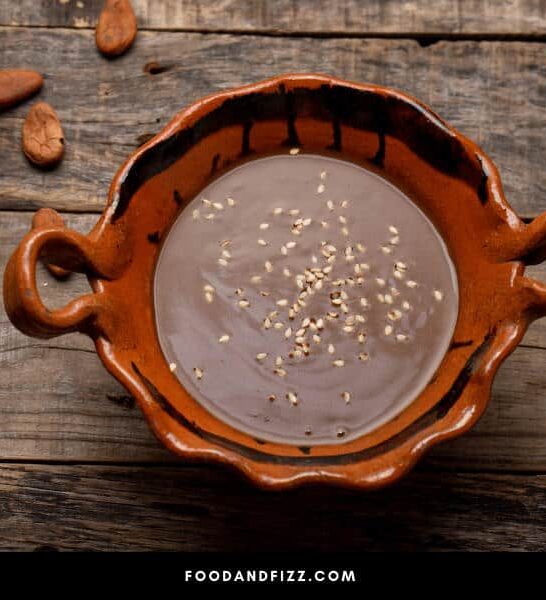If you’ve made a visit to Mexico and picked up some mole to take home, you might be wondering how long it will last. Or perhaps you’ve decided to try your hand at an authentic recipe and found it’s an intensive, big-batch affair.
Will you be able to eat it all in time? Read on to find out more about what mole is, how it’s made, how the different types differ, and how long it will last in storage.
How Long is Mole Good For?
Mole paste is often made from ingredients that store well, with a high salt and low moisture content. That said, mole paste keeps much longer than sauce, and mole negro will last longer than mole verde. In the refrigerator, your sauce will keep for up to six days. In the freezer, it can keep for six months. And an authentic, long-cooked, concentrated mole paste can last for years, even in the pantry.
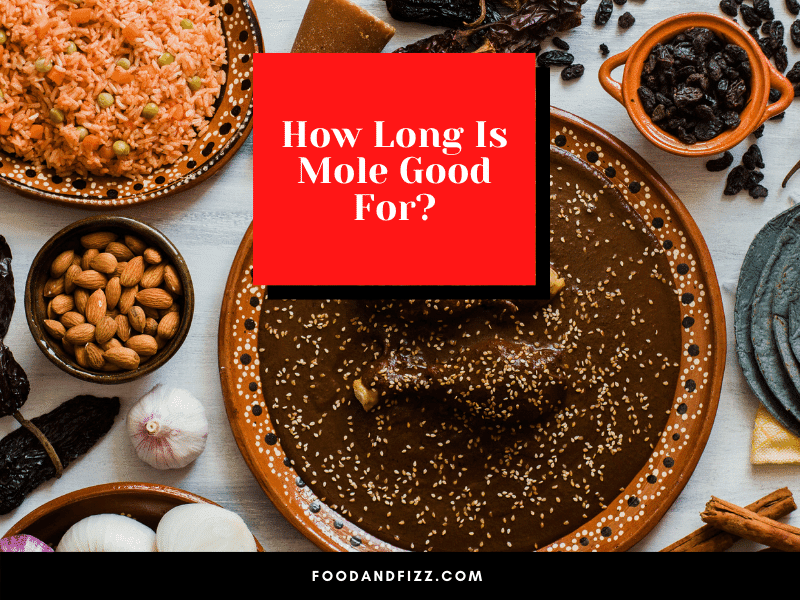
Types of Mole
Among many delicious dishes, mole may be Mexico’s most iconic culinary contribution. Mole comes from an Aztec word, molli (or mulli), which actually just means “sauce.” In fact, there are over forty different forms of mole! Below are a few examples.
- Mole verde gets its name and color from the fresh herbs and vegetables it contains. Because of its fresh ingredients, this type of mole won’t last as long in storage.
- Mole dulce is often made with bananas or plantains that give it a sweet name and a sweeter taste.
- Mole poblano may be the easiest to make for a weeknight meal. Traditional ingredients include pasilla chiles, coriander, and pumpkin seeds.
- Mole negro gets its name and color from the dried chiles, smoky spice blend, and unsweetened chocolate that form the basis of the sauce. This type of mole keeps well because its ingredients are dried and naturally preservative.
- Mole manchamanteles translates to “tablecloth-staining mole.” Enough said!
Although the regions of Puebla and Oaxaca are the most famous for their moles, this iconic Mexican cuisine is made all over the country and even the world. In fact, it is one of the first recorded foods to include intercontinental ingredients.

Ingredients of Mole
While mole can vary from place to place and even kitchen to kitchen, all moles have a similar combination of ingredient categories:
- Spicy (at least two different types of chiles, and a variety of other spices)
- Sour (tomatoes or tomatillos)
- Sweet (dried fruit or sugar)
- Thickener (bread, nuts, or seeds)
In the US, mole has become associated with a particular ingredient: chocolate. This may be because chocolate can act as both a sweetener and a thickener in mole. But the truth is, most moles share chiles as a common ingredient, rather than chocolate.
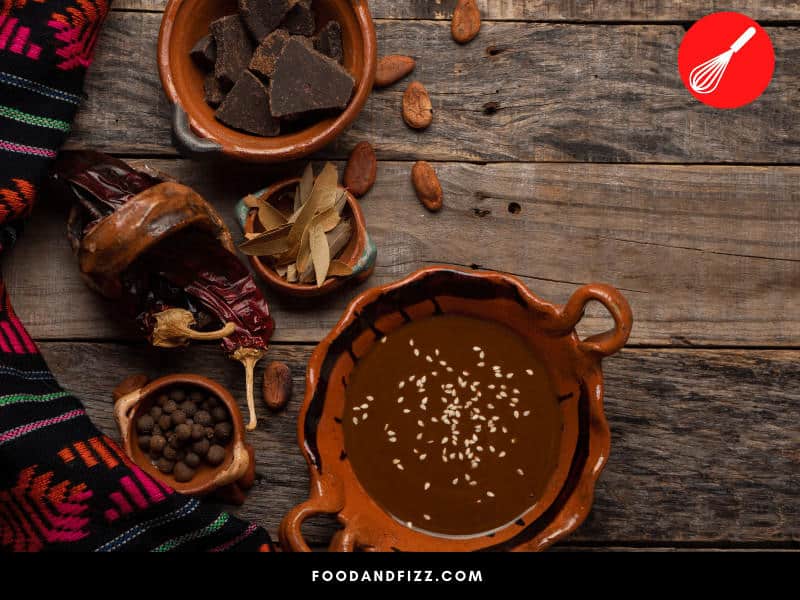
A Rich History
While mole is more than chocolate, it’s true that this particular ingredient has a rich history in Mexico and Central America. For the Aztecs and Mayans, chocolate combined with spices (and sometimes other special ingredients, including blood) was consumed as a hot and cold beverage.
Some Meso-American peoples believed that cacao was a gift from the gods and used liquid chocolate in sacred rituals. However, there is little evidence that these early groups used chocolate for making everyday cooking sauces.
A legend about the origins of mole takes place at a convent in Puebla, one of the two regions in Mexico best known for their mole (the other is Oaxaca).
When the nuns at the convent heard that the archbishop was coming to visit, they gathered together to pray and to pool their poor ingredients—a mix of chiles, spices, nuts, day-old bread, and chocolate.
The nuns served this sauce to the archbishop over turkey. The dish was a hit! When asked what it was, one replied, “We made a mole.”
Mole: A Long Time in the Making
Mole has a reputation for taking a long time to make. Some traditional mole recipes take hours—even days. This may be because many mole recipes include such a complex list of ingredients. Spices and chiles may be toasted.
Nuts and dried fruit may be ground. Tomatoes and herbs may be skinned and seeded. The long cooking time might also be due to the simmering of the herbs, spices, and dried chiles that allows the flavors to blend and the sauce to thicken.
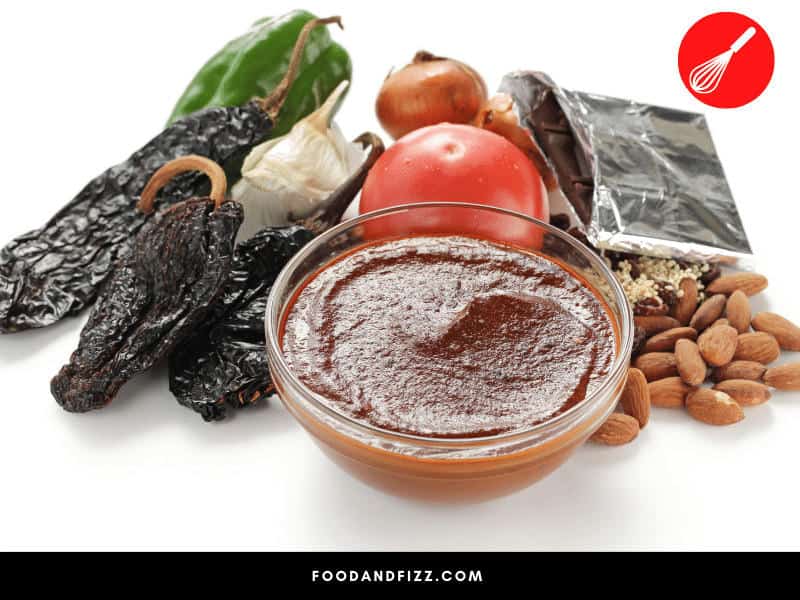
Mole Sauce vs. Mole Paste
Most mole you can make or buy is a sauce (makes sense, given the name—”mole sauce” is a bit like “pizza pie”). But because that sauce takes a long time to make, and doesn’t keep for as long, there is mole paste.
Mole paste is a concentrated and dehydrated version of mole sauce that can store in the pantry or freezer for months and even years. To turn mole paste back into sauce, simply combine one part paste with three parts water or broth to reconstitute.
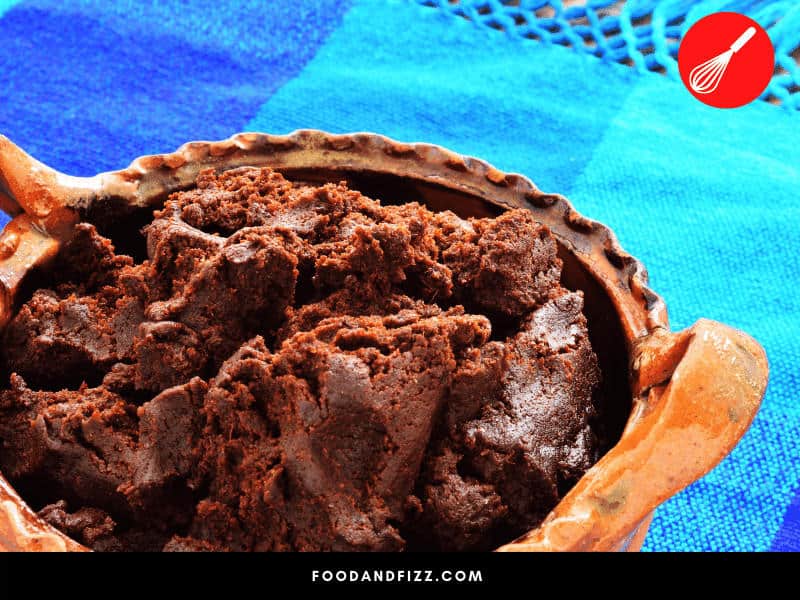
Frequently Asked Questions on How Long Is Mole Good For?
Should I Keep Mole in the Refrigerator?
As a sauce, jarred mole is best stored in the refrigerator after opening where it will last for up to a week. Mole that has been dried into a paste or powder can be stored in some cases at room temperature. When in doubt, please read the label for guidance in how to store food safely.
Can I Freeze Mole?
Mole sauce or mole paste can be frozen to make it last for months or even years. Like other sauces, it can be thawed or reconstituted after freezing.
How Spicy is Mole?
The spice level of mole depends on the chiles used in making it. Most moles include at least two types of chiles. The most commonly used ones are ancho, pasilla, mulato and chipotle.
How Do I Know If My Mole is Still Good?
Mole verde typically has a rich green color and a thick consistency. If it looks brown or watery, chances are it has gone bad or at least lost its intended flavor. Mole negro typically lasts longer, but can also go rancid if made with chicken broth. Trust your nose.

